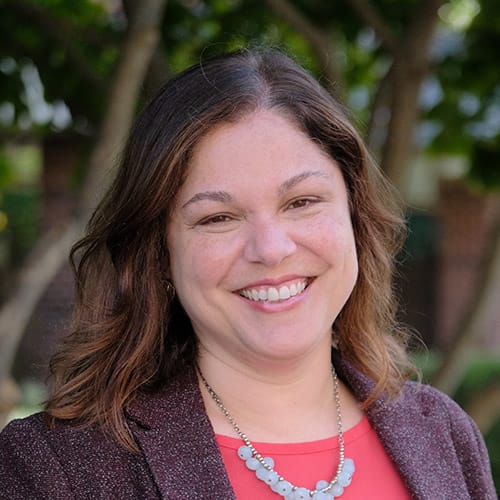
Senior Rehab: Better Care Options After a Hospital Stay

Is your family trying to decide where an elderly loved one will complete rehab after they’re discharged from the hospital? Rehab centers for the elderly can be found at skilled nursing facilities and assisted living communities, or through home health care services. Rehab services help seniors recover as quickly and safely as possible. Taking your loved one’s needs, your budget, and their doctor’s input into consideration can help you plan for next steps after their hospital stay.
Let our care assessment guide you
Our free tool provides options, advice, and next steps based on your unique situation.
Key Takeaways
- Senior rehab centers help seniors recover after a serious medical event. Rehab centers have therapeutic equipment and technologies, plus on-site rehabilitative therapists.
- There are numerous therapy types. A doctor may recommend physical, occupational, or speech therapy depending on the senior’s needs after hospitalization.
- Senior rehab is offered in multiple locations. Seniors can access rehab services in a skilled nursing facility or assisted living community, or through home health care services.
- It’s crucial to make a discharge plan after a hospital stay. Ask your loved one’s doctor about care expectations and steps you can take to help them recover.
What is senior rehabilitation?
Senior rehabilitation is a type of specialized, post-hospital care that helps elderly adults recover from an injury or serious medical event, such as surgery. Rehab for elderly patients after a hospital stay can occur at a rehab facility or through rehab services provided in a senior’s home or assisted living community.
Rehab therapies help to reduce pain and improve a person’s overall function so they can regain their independence and health. Elderly rehabilitation facilities or senior rehab centers offer a range of rehabilitative therapies for various conditions.
Types of rehab therapies at a senior rehab center
Senior rehabilitation centers offer several types of rehab therapies. After-hospital care for the elderly typically includes one or more of the following rehabilitative therapies:
- Physical therapy helps improve mobility, balance, and flexibility. Meant to increase strength and manage pain, physical therapy is commonly recommended after a serious injury and can also help alleviate pain from chronic conditions such as arthritis.
- Occupational therapy assists with activities of daily living (ADLs), use of adaptive equipment, or fine motor skills. It’s commonly recommended for seniors recovering from an injury, illness, or stroke.
- Speech therapy helps with conditions that affect communication, swallowing, or cognitive skills such as attention or memory problems. It’s typically recommended after a stroke or injury that affects the brain.
Common medical events that may require rehab after a hospital stay
The majority of seniors go to rehab for musculoskeletal problems and after joint replacement.[01] Other common conditions include strokes and severe infections like pneumonia. Although these conditions lead to the highest rehab admittance among seniors, they aren’t the only conditions that require rehabilitative therapy.
Here’s a list of the common conditions that require rehab for elderly after a hospital stay or a stay at a senior rehab center:[01,02]
- Broken or fractured joints
- Joint or hip replacement
- Parkinson’s disease
- Cardiac events (heart attack, cardiovascular disease, etc.)
- Arthritis
- Osteoporosis
- Cancer
- Mobility issues (frequent falls)
Rehab after surgery for elderly adults is also common.[02] People sometimes struggle to readjust at home after certain surgeries, so doctors might recommend going to a rehab center after surgery.
Why rehab is essential for seniors
For many senior health conditions or incidents, hospitals stays are just the first step in recovery. In fact, most of recovery typically happens outside of the hospital. That’s why it’s incredibly important to thoughtfully plan what a loved one’s care will look like after their stay — especially if they’ll need rehab services. Choosing the right rehab facility can shorten your loved one’s length of recovery, and it can improve their overall wellness.
Maureen Bradley, a senior new hire support specialist at A Place for Mom, has worked in the senior care industry for over two decades and is currently working on her doctorate in memory care. She’s routinely guided families who’ve dealt with a senior loved one’s recovery after a rehab stay.
“After a hospital visit, it’s important for seniors to have a maximum chance of recovery,” Bradley explains. “Whether the issue at hand is mobility, pain, or cognitive skills, rehab centers provide the widest range of resources to help seniors confidently get back on their feet.”
Bradley says rehab also benefits the family: It gives everyone a break and peace of mind, as equipped and trained professionals help their loved one recover from a recent hospitalization.
Inpatient and outpatient rehabilitation services for the elderly
Senior rehabilitation centers may offer inpatient and outpatient services. Your loved one may need inpatient rehabilitation if they need around-the-clock care and continuous monitoring. Learn more about the differences between the two types of rehab:
- Inpatient rehab requires people recovering from a serious injury, debilitating disease, or major surgery to stay at a facility for a period of time. This type of rehab allows for intensive care that generally includes daily physical, occupational, or speech therapy. Inpatient rehab facilities may offer dietitian-approved meals, exercise classes, social activities, and counseling services on top of skilled medical care and assistance with daily activities, such as bathing and getting dressed.
- Outpatient rehab enables seniors to visit a rehab center for therapy appointments, typically several times a week, to complete their course of rehabilitation. Outpatient rehab also offers physical, occupational, and speech therapy services that can be provided in the senior’s home or assisted living facility.
EXPERT TIPS: DECIDING BETWEEN INPATIENT AND OUTPATIENT REHAB
- First, figure out how much help your senior loved one will need with transfers and other activities of daily living.
- Weigh that information with how much time someone could be available to help the senior at home.
- Consider whether your loved one is at risk for falls or if they’ll ever be alone in the house.
- Perhaps most importantly, determine how long the rehab process will last and what the possible outcomes are. For example, a respite stay in an assisted living community is an option if a senior’s family can’t provide adequate support at home following a rehab stay in a skilled nursing facility.
Short-term vs. long-term rehabilitation for elderly patients
Some senior rehab centers offer both short- and long-term inpatient rehab options. Your loved one’s health will dictate how much rehab they need.
For example, after a minor surgery, your parent may only require a short stay at a senior rehab center. However, chronic, serious conditions, such as heart problems or a stroke, may require several months of rehab services. This type of care is best given at a skilled nursing home that provides 24-hour care, seven days a week.
You may be curious how long seniors typically stay in a rehab facility. There’s no figure for an average stay in rehab after a hospital visit, because the time greatly varies depending on a senior’s medical condition and overall health. Your loved one’s doctor will consider the severity of their illness or injury to determine the type and length of the rehab program they need. Together, you can decide if your parent is most likely to achieve rehab goals safely at a skilled nursing facility or through a different rehab option.

Let our care assessment guide you
Our free tool provides options, advice, and next steps based on your unique situation.
How to choose a senior rehabilitation location after hospitalization
Senior rehabilitation can take place in a variety of settings. To decide where your loved one will receive care, you’ll want to talk to their doctor and think about their needs, budget, and preferences. You can also learn about Bradley’s evaluation of the pros and cons of each rehab option in the sections below.
Elderly rehabilitation at assisted living communities
Many people aren’t aware that rehabilitation can also be completed in assisted living communities. In fact, several assisted living facilities in A Place for Mom’s nationwide network offer on-site rehabilitation services. Here’s a breakdown of what’s offered by type of therapy across our nationwide partners:[03]
- About 83% of partner assisted living facilities offer visiting physical therapists.
- About 82% of partner assisted living facilities offer visiting occupational therapists.
- About 79% of partner assisted living facilities offer visiting speech therapists.
These health care professionals can provide specific therapies and nursing services that are paid for by Medicare, Medicaid, or private insurance.

Talk with a Senior Living Advisor
Our advisors help 300,000 families each year find the right senior care for their loved ones.
Aside from visiting specialists, most of our partner assisted living communities also have on-site physical and occupational therapy rooms. These rooms enable residents to take advantage of high-tech equipment multiple times throughout the day, with the added benefit of 24-hour assistance from the assisted living community staff.
The median price of assisted living is approximately $5,000 per month, according to A Place for Mom’s most recent partner community data.[04]
For seniors looking for a short-term stay, ask about a short-term respite care stay at an assisted living community. Approximately 88% of our assisted living partners across the nation offer respite care services for families in need of short-term options.[03]
A respite stay at an assisted living facility may be a good option for a loved one who still requires some support after an inpatient rehab or hospital stay. This option is ideal for a senior who isn’t confident enough yet to go home alone.
Respite care can allow a senior to have the peace of mind that someone is available 24 hours a day for assistance and for immediate response to emergencies. It can also provide family caregivers a much-needed break as trained professionals care for their loved one.
| Pros of rehab in assisted living | Cons of rehab in assisted living |
|---|---|
| Assisted living communities are homelike environments that don’t have an institutional feel. | It’s not the patient’s actual home, which they may be eager to return to. |
| Many physical therapists travel to these communities. | There typically aren’t around-the-clock physical therapists. |
In-home rehab for elderly after a hospital stay
Some senior rehabilitation services can be carried out in the home through home health agencies. Home health services may be paid for by Medicare, Medicaid, or long-term care insurance. The median price of in-home health care is approximately $6,300 per month, according to Genworth.[05]
Home health services are provided by licensed medical professionals who come to the home to do a specific task that has been ordered by a physician. These tasks may include monitoring vitals, administering injections, providing wound care, or facilitating a physical therapy exercise program.
Home health rehab therapy can only be offered a few times a week. This means that seniors who receive these services must be motivated to follow their rehab program when the therapist isn’t there. This option may be best for seniors who have family members around the home to help throughout the day. Family members should make sure safety measures are followed and help their loved ones stick to their recommended regimen.
Remember that in-home therapies might lack the peer support and socialization that can be provided in skilled nursing facilities and assisted living communities. That support and socialization often gives seniors the extra motivation they need as they recover.
| Pros of in-home rehab | Cons of in-home rehab |
|---|---|
| Rehab services allow a senior to be in their own home. Many seniors prefer to continue living in their own homes, if possible. | Coverage may be inconsistent. For example, some appointments may be missed if someone needs to cancel. |
| Services are brought to the person, so they don’t have to arrange transportation to and from a rehab center. | Therapist availability is limited, so scheduling may be tricky. |
| In-home care tends to quickly become cost prohibitive. |
Senior rehab therapy at skilled nursing facilities
Skilled nursing facilities, also called rehab hospitals, offer short-term housing and rehabilitation services for people who require 24-hour nursing services and specialized medical care. These inpatient rehab facilities typically have a clinical environment with hospital beds and shared rooms. Meals, dietary counseling, activities, and social services are often provided.
The median monthly price of a skilled nursing facility is approximately $8,669 for a semi-private room and $9,700 for a private room.[05] Approved skilled nursing facilities may be covered by Medicare, as long as your loved one enters the facility within 30 days of an inpatient hospital stay that lasted at least three days.
| Pros of rehab in skilled nursing facilities | Cons of rehab in skilled nursing facilities |
|---|---|
| It’s the closest thing to hospitalization. | It’s usually limited by insurance coverage. |
| If a senior has multiple or complicated medical factors occurring at the same time, then a skilled setting may be the best choice. | These facilities typically have a hospital-like feel. |
| A skilled setting may also be the best choice if a senior is at risk for falls or lives with behavioral challenges. |
To compare the cost of care options near you, use A Place for Mom’s 2024 report on the cost of long-term care and senior living.
Questions to ask about your loved one's hospital discharge plan
To help determine your loved one’s recovery options, ask their doctor these questions before leaving the hospital:
- What therapies will my parent require?
- What services will Medicare or other health insurance pay for?
- Will my parent need help with dressing or bathing?
- Will my loved one need help with cooking and housework?
- Will my loved one be safe at home upon discharge, or will someone need to be with them 24 hours a day?
- What’s the average length of recovery time for my loved one’s specific condition?
- What problems, symptoms, and side effects should we watch for?
- What should we do about any potential side effects or problems?
- What does each medicine do, and why is it needed?
- What are the medication dosages and side effects?
- Who do we call if we have questions about medical equipment, such as oxygen or a walker?
Long-term care after senior rehab
While it’s often a family’s goal to get their loved one home after rehab, that might not be a feasible option. Some serious medical conditions may make staying at home dangerous, so it’s important to consider different options.
“Oftentimes, families expect their loved one to come home after an inpatient rehab stay, however it’s not always an option,” Bradley says. “Many families are provided a short notice — often 48 hours — before their loved one’s discharge that their loved one can no longer stay at the rehab facility, but they’re also not safe to return home.”
Common situations, like the one Bradley describes, put families in a bind. They may not have considered other options, leaving them a small window to find a suitable place for their loved one.
This is where a hospital social worker or case manager can help. Case managers can put families in touch with A Place for Mom’s health care account executives, who work in hospitals to help families lay out potential options for post-hospital care. They might recommend a move to either a skilled nursing facility or assisted living community, environments that can provide crucial, long-term care services depending on your loved one’s specific needs.
If families decide they’d like to go the assisted living route, our health care account executives will recommend contacting a Senior Living Advisor. Our experts do their best to provide several local options based on your aging loved one’s rehabilitative care needs, budget, and preferences. They can even help set up tours — all at no cost to your family.
Key Takeaways
Tijsen, L. M. J., Derksen, E. W. C., Achterberg, W. P., & Buijck, B. I. (2019, August 12). Challenging rehabilitation environment for older patients. Clinical Interventions in Aging.
Gell, N. M. & Patel, K. V. (2018, October 8). Rehabilitation services use among older adults according to fall-risk screening guidelines. Journal of the American Geriatrics Society.
A Place for Mom. (2024). A Place for Mom proprietary data.
A Place for Mom. (2024). A Place for Mom proprietary medial price index.
Genworth. (2023). Cost of Care Survey.
Nursing homes in all states
The information contained on this page is for informational purposes only and is not intended to constitute medical, legal or financial advice or create a professional relationship between A Place for Mom and the reader. Always seek the advice of your health care provider, attorney or financial advisor with respect to any particular matter, and do not act or refrain from acting on the basis of anything you have read on this site. Links to third-party websites are only for the convenience of the reader; A Place for Mom does not endorse the contents of the third-party sites.
Make the best senior care decision
Make the best senior care decision